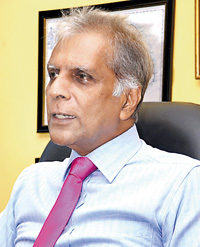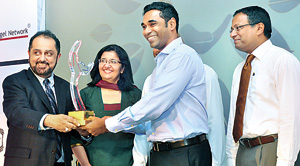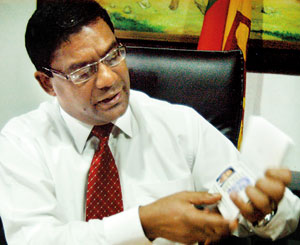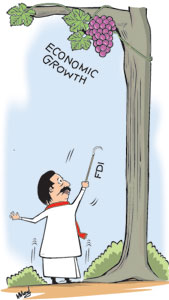Tourism: If you build (hotels), will they come?
View(s):Sri Lanka’s tourism ambitions are both entertaining and terrifying at the same time.� The industry has seen a surge in post-war tourist arrivals—growing at over 25% annually since 2008, serving to swell an incredibly charged atmosphere of hope for tourism.� Before our very eyes, every patch of rolling green with a waterfront is being quickly developed into a boutique hotel.� But are we building the right hotels?� And even if we do build them, is there any guarantee that holidaymakers will come in droves?
The face of the Sri Lanka tourist has gone through a good deal of evolution.� In its golden age, the island was a post-colonial paradise.� Western Europeans flocked for promises of golden beaches, rolling hills and exotic beasts.But Europe was yesterday.� Today and tomorrow belongs to Asia, and a new breed of tourist is fundamentally changing the structure of the tourist economy in Sri Lanka:
Changing face of tourism
.As more Middle Eastern, Asian and Eastern European tourists discover Sri Lanka, they are creating their own pattern of experiences on the island.� For one, they are breaking the notion of seasonality in Sri Lanka, even though they are not staying as long.
Sri Lanka is increasingly “season-less”
The traditional winter and spring months are both not feasible for our growing breed of tourists, as they are considered exorbitant. Middle Easterners seek ever growing respite from the heat of the desert, Eastern Europeans seek inexpensive beach holidays during the pre-season autumn months and South Asian tourists consider Sri Lanka a viable destination almost all year round. The average national differential in hotel occupancy between the traditional peak and off-peak season is now 6%, versus 19% in 2001.
Maintaining post-war momentum
With a new-found peace, Sri Lankan expatriates have made an annual pilgrimage to the island, laying title to their long-lost home.� Post-war Sri Lanka was also featured prominently in the international press creating a surge in arrivals of over 45% in 2010.� This “newly curious” segment are more than likely to shoot over, sniff around and perhaps realize that Sri Lanka, while relatively unspoiled is a somewhat overpriced destination.
In the light of new, more price sensitive segments seeking out Sri Lanka, the hospitality sector is faced with the challenge of diversifying the experience. It will be more important than ever before to create a range of more palatable price points and build more tourism assets in an industry wracked with challenges:
Great Rise in Rates
As several analysts and experts have pointed out, the hospitality sector has experienced a period of corrective inflation, though instead of a gradual rate increase, room rates and restaurant prices have shot up dramatically in a short space of time.� Much of the 80% price inflation in the tourism industry has happened in the past two years, however, across the industry questions abound on the proportionate growth in the value of Sri Lanka’s tourist offerings.
Building the Brand
While Sri Lanka is not cheap, the experience is authentic.� And it is the steam of this authenticity that drove the tourism engine for decades, despite skyrocketing prices.� But Burma, Cambodia, Indonesia and several nearby destinations have opened up their own markets and new discoveries for the adventurous traveller. Creating a cohesive brand is important, but for a destination like Sri Lanka, more pressing is the need to develop unique, compelling stories around individual markets—and that is really driven by private sector efforts.
Converting Day Trippers into Genuine Tourists
Tour operators and hoteliers are increasingly skeptical about reported arrivals numbers.� They’ve offered up every explanation of the mismatch between actual hotel occupancy levels and reported arrivals statistics. From expatriate returnees’ staying with families to budget travellers seeking alternative accommodation and day-trippers, or junket travellers who rarely splurge on graded accommodation, there is a remarkable impact on the proportions of tourism segments.� Colombo is an attractive Asian city experience to many “day trippers” or short haul travellers, and can certainly grow to be a metropolitan oasis, should we leverage the right resources to convert some of these travellers into authentic tourists.
Despite ever-climbing capital costs, investors are pinning their hopes on the fundamental appeal of the island, and wait with bated breath for the renewed surge that will fill our hotels and crowd our beaches. It is telling that under the most inflationary economies, private investors are building hotels in droves, exploring every possible charming nook for a boutique hotel or wide-spaced beach for a resort. To add to this international hotel chains and existing industry players are placing a great deal of faith in the future of Sri Lanka’s appeal to the outside world.
But does Sri Lanka Tourism have what it takes to keep them coming?
Fundamentally, yes.� Despite its lack of competitiveness, limited service levels and an ineffectual brand, Sri Lanka has an authentic product in its favour, and to the extent that investors, developers and individual operators can leverage resources to promote and sustain this authenticity, brand Sri Lanka can only grow in appeal.
(The writer is CEO and founder of Colombo-based strategy consulting firm Vox & Co. To download an in-depth white-paper on Sri Lanka’s tourism sector outlook for 2012, visit www.voxonline.biz)
comments powered by Disqus


















